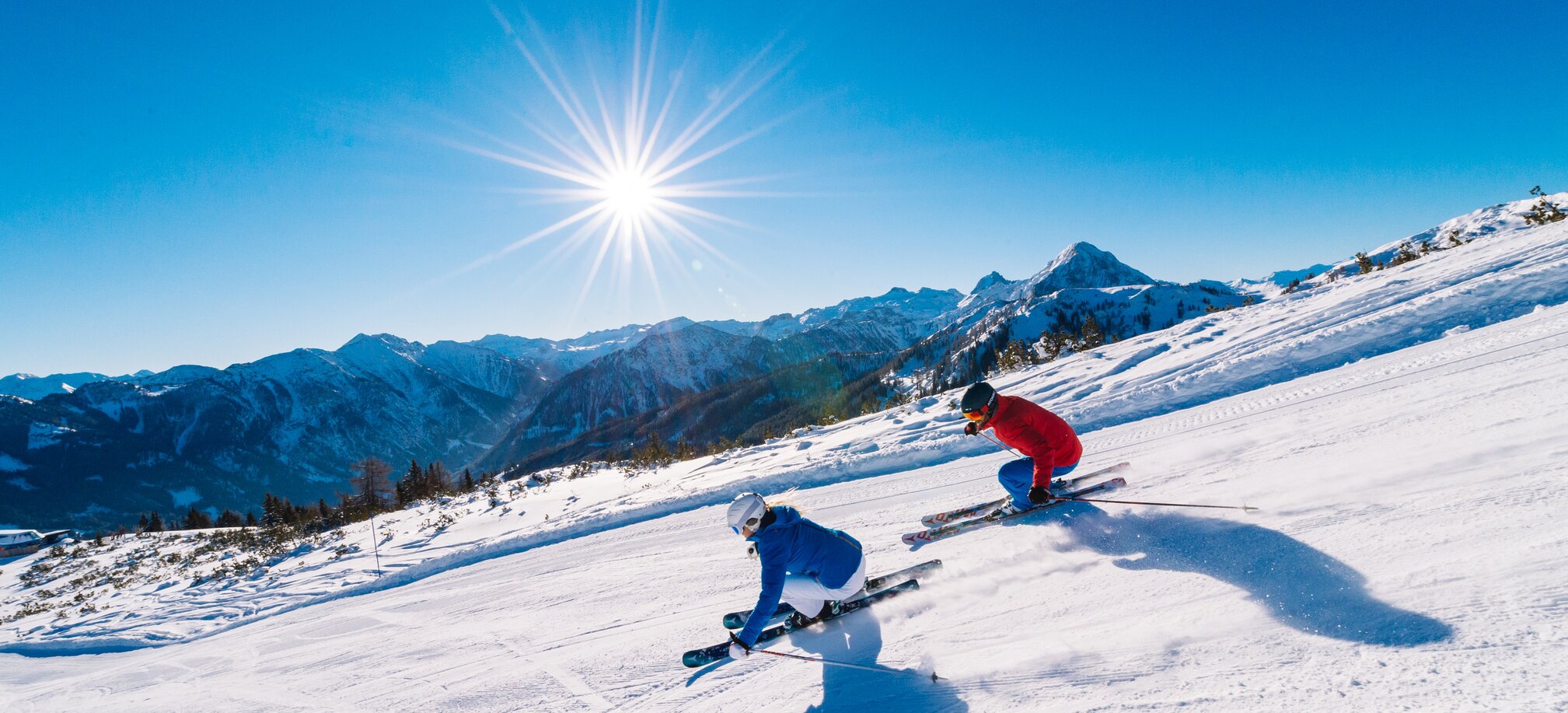
- Your entire upper body should remain as still as possible, don’t rotate your upper body!
- You are generally looking towards or facing the valley or downhill.
- Focussing on a point like a house may help.
- An even up / down movement of the ankle, knee and hip joints.
- Just before each turn, your body goes up and puts pressure on the inside edge of what will become the downhill ski. The up and then down movement will help to apply pressure, and then slide through the turn.
- Stay central on your skis. If you feel the entire ski boot on the sole of your foot you’re doing it right.
- A pole plant is used for rhythm as an actual light prod of the snow rather than planting just as you initiate a turn.
- Whilst traversing your body looks like it might be leaning on a bar stool.
- A wider stance is in, around a hips-width is recommended. Swinging your hips and body around is old-school! Start a turn from your ankles, knees and then hips by moving up and forwards and then down as you start to turn.
Short turns
This type of skiing involves using the basic position and turning in short radius’ quickly one after the other.
Parallel long turns
Same basic position, movement from ankles upwards as in a short turn but the radius is made longer. Each turn is longer.
Carving
The most important aspect of carving is a good skiing ability! The form of the ski takes care of most of the work. Due to the design of the ski, once you have your positioning in check you can rely on your edges and steer your ski’s radius. In order to enjoy such skiing it takes practice and there are few elements that are more advanced than the basic position. An empty slope helps too in order to pick up speed.
Have fun and enjoy!



